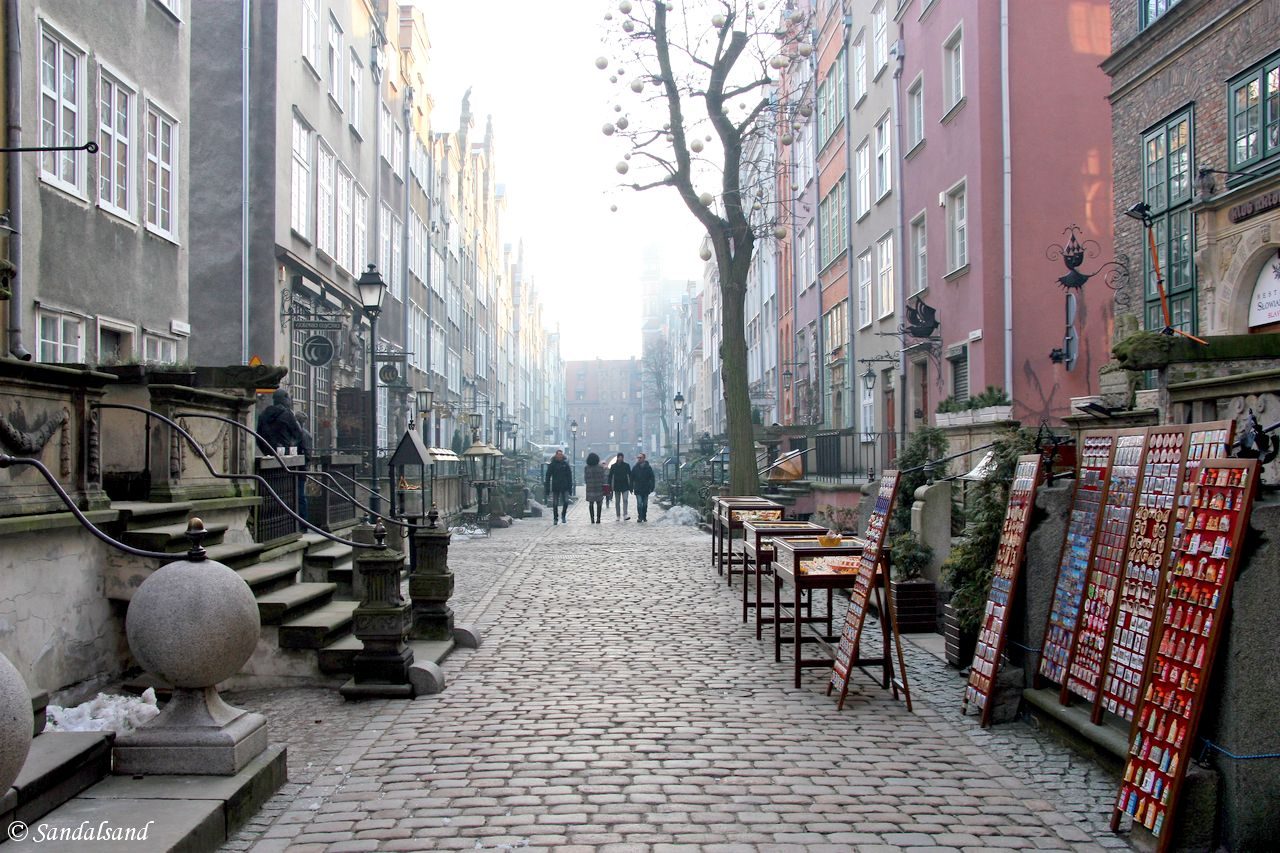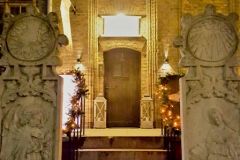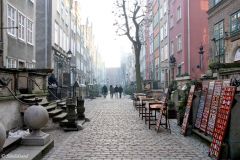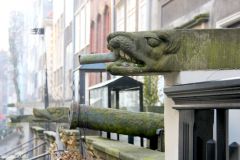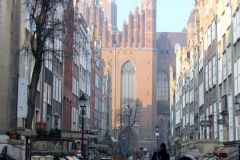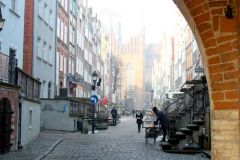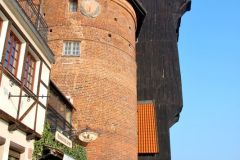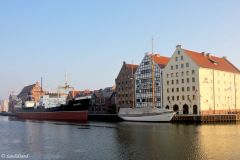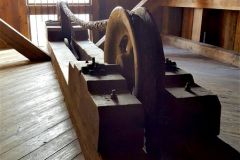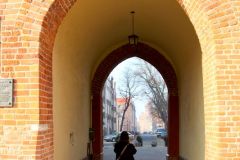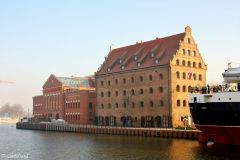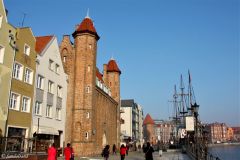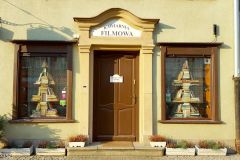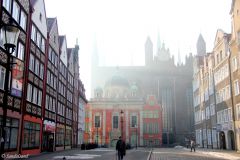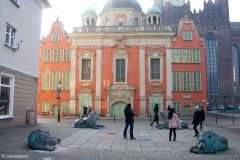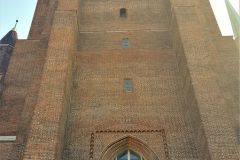Join in on a walk in Gdansk, part 1. This is the first of two walking routes through the historic city centre of Gdansk, Poland. It was largely destroyed during WWII but soon rebuilt to its former splendour. Today the narrow, cobbled streets with the red-brick churches, city gates and elegant buildings have become a magnet pulling visitors from near and far.
Introduction
I spent an entire day and more walking the streets of the old town, ending up full of impressions and pictures. I found that the best way to present Gdansk would be to split my presentation into two articles and connect the attractions and sights by two walking routes. An instructive map is found at the bottom of this article. I also wrote an introduction article called Gdansk – past and present which you may want to have a look at first.
The route
This route starts behind the huge St. Mary’s Basilica which we will come to further down the page. Here at the church end of Mariacka Street I had found a very nice little hotel called Gotyk House. It was just perfect in terms of location, service, breakfast and atmosphere. In addition it is the oldest tenement house in Gdansk, dating back to 1453. Book it or find another.
Take your time strolling down the street, stop at the street vendors, gaze up on the gables and enjoy all gargoyle water spouts leading rain water from the roofs. At the end of the street we pass through Mary’s Gate, one of many gates around this old part of Gdansk.
.
At the other end of the gate we face the Motlawa River, central in making Gdansk into a very active port city from the Middle Ages and up to present times. We turn left and follow the very picturesque river bank until we see The Crane (Zuraw).
This is arguably the most iconic structure of Gdansk and featured on most postcards. The building was destroyed during WWII but rebuilt to its design in 1442-1444. The crane was used to transfer cargo and to put up masts on ships. Once upon a time it was the world’s largest working crane with a very good lifting capacity. I would advise you to buy a ticket in the building next door and climb the stairs to see what it looks like from the inside, as well as getting an impression of the exhibitions.
Coming up next is the another city gate, the Swietojanska Gate. Across the river you will already have noticed the ship-museum “Soldek” and also the National Maritime Museum. The ship was the first steamship built in Gdansk after 1945 at what was to become the Lenin Shipyards. As such the museum is one of national pride and not (perhaps) so interesting for foreigners. Both museums involves a quite big detour, and I did not visit them.
Instead I continued along the river to Huckster Gate (Straganiarska) and had a glance at the Swan Tower at the far end. They are both worth having a look at, but as far as I know there is nothing inside.
.
To reach the last section of this walking route of central Gdansk we will have to take the less famous streets, but nonetheless interesting as well. Have a look at the map below and make sure you enter Grobla Street at least from section I. The view at the end of the street is breathtaking. At the very end the St. Mary’s Basilica is the dominant structure. This is said to be the largest brick church in the world. Inside you should be able to count 37 windows, 300 tombstones and 31 chapels. It has a capacity of 25,000 people and is a splendid place to see from the inside as well as from a distance.
Before we do that we will have a close look at the Lion Fountain (Four Quarters Fountain) and the splendid facade of the Royal Chapel directly behind it. The four lions in various positions are part of a fountain and represent the four old quarters of the city. The baroque chapel was built in 1681 for the city’s (at that time) Catholic minority.
This is the end of our little tour. To enter St. Mary’s you would want to turn right across the car park and continue around the corner. That is also where Part 2 of this tour starts.
The map
That was my walk in Gdansk, part 1. The following map includes the old town walking routes as well as the attractions they are meant to connect. In addition it offers location markers of interesting places shortly outside the old town, like the European Solidarity Centre and Westerplatte. Zoom in and out as you like and click on the markers for additional information.
The chapters in this series
(2) A walk in Gdansk, part 1 (THIS)
(3) A walk in Gdansk, part 2, plus Westerplatte
(4) Malbork Castle on a day trip from Gdansk
The Malbork castle is also presented in these two posts:
World Heritage #0847 – Castle of the Teutonic Order in Malbork
VIDEO – Poland – The Malbork Castle
There are more articles on the Sandalsand website from Poland. Check them out too.

